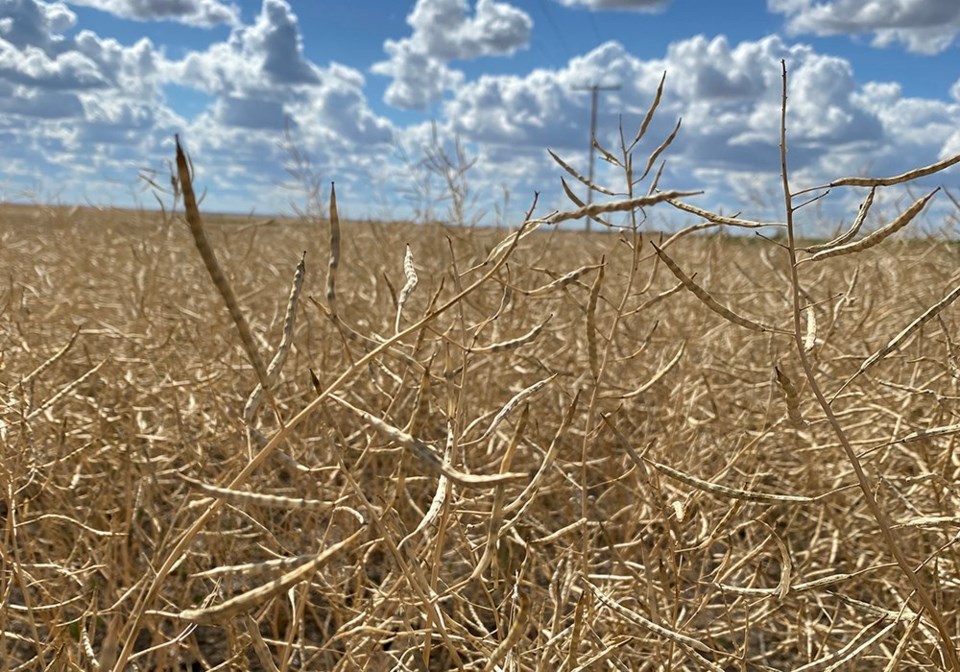Canada’s agriculture ministers agreed to a set of principles to guide the next policy framework during their Nov. 8-10 meeting in Guelph.
However, replacing AgriStability with a margin-based program isn’t among them. Instead, any changes will be made within the existing program.
Saskatchewan agriculture minister David Marit said there wasn’t enough information available yet on how a program like that would work and not enough time to put it in place.
“In the time frame we wouldn’t have been able to do it to implement it in 2023,” he said in an interview. “We don’t know the final numbers on how you would do it.”
There are questions around whether it would be a whole-farm program and what the premiums would be, he said.
The agreement that takes effect April 1, 2023, has to be signed by July 2022, he said. Practically, that means officials would have to have a replacement ready to go by May at the latest.
Prairie agriculture ministers touted the margin-based income protection program at last year’s meeting as dissatisfaction with AgriStability overflowed.
Since then, provinces agreed to remove the reference margin limit to make it more responsive. Private insurance also no longer counts as income against program claims.
“What we’re looking for, (are) there other things within the parameters of the program that could be enhanced?” said Marit.
Manitoba agriculture minister Ralph Eichler agreed further changes aren’t off the table.
“The feeling that I got, and I think it was pretty well unanimous, is that AgriStability had to stay but not necessarily in its form that it is,” he said. “How do we tweak it to make it more predictable, more sustainable, more reliable, more resilient so (farmers) have confidence going forward?
“We talked about all those things but we didn’t land the plane. We’re getting closer for sure.”
The Guelph Statement issued after the meeting focused on sustainable agriculture, featuring environmental, social and economic considerations.
It identifies five priority areas for the next framework: climate change and the environment; science, research and innovation; market development and trade; building sector capacity and growth; and resiliency and public trust.
Federal minister Marie-Claude Bibeau noted ministers agreed on a vision for the framework that Canada would be recognized as a world leader in sustainable agriculture “and drives forward to 2028 from a solid foundation of regional strengths and diversity, as well as the strong leadership of the provinces and territories, in order to rise to the climate change challenge, to expand new markets and trade while meeting the expectations of consumers, and to feed Canadians and a growing global population.”
Bibeau said improving BRM programs is still very much on the agenda to ensure the economic sustainability of the sector.
“We are also open to consider another approach such as the more general insurance programs but the priority for the coming months will be to improve the actual suite of programs,” she said during a news conference.
The Canadian Federation of Agriculture was among farm organizations that met with the ministers during the meeting.
CFA said there was strong consensus on the importance of ecological goods and services programming, collaboration and science to meet environment targets, triple bottom-line sustainability and strong business risk management programs.
“We all agreed that a robust and competitive agriculture sector is important, and also that being proactive in addressing climate change will be a key aspect of that,” said president Mary Robinson.
To that end, CFA noted the need for increasing collaboration between the federal government’s environment and agriculture departments in the future.
Douglas Hedley, a former federal assistant deputy minister of farm financial programs, said during a Canadian Agri-Food Policy Institute webinar Nov. 15 that Bibeau’s mandate letter from prime minister Justin Trudeau should include that type of directive.
He said of the priorities listed in the Guelph Statement only one — BRM programs — falls solely under agriculture’s jurisdiction; all the others either intersect or fall under other ministers’ portfolios.
New mandate letters for the cabinet named in late October had not yet been released.
Eichler added that the federal government’s climate agenda doesn’t necessarily meet with the approval of Manitobans or western Canadians and western ministers stood their ground in demanding farmers be recognized for what they’ve already done while acknowledging there is more work to do. Competitiveness was a theme throughout the meeting.
Ontario minister Lisa Thompson also said each province wants to be sure the programs are flexible and responsive to the realities in each province.
Ministers are expected to meet at least once before their next annual meeting scheduled for July in Saskatoon during Ag in Motion.




